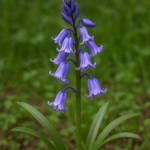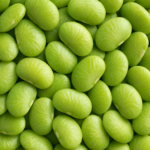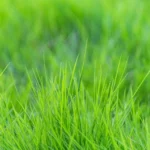
Hibiscus, also known as rose mallow, is a species of plant in the mallow family. There are over 200 hibiscus species found in warm and tropical regions around the world. Hibiscus grows best in sunny, well-drained soil. This plant is best known for its lovely flowers. Hibiscus is typically grown for ornamental purposes, but it can also be used in the human diet, as a treatment for various disorders, and as a source of natural dyes. Wild hibiscus is an important source of food for the larvae of certain insects. Due to habitat loss and disease, several Hawaiian hibiscus species are endangered or extremely rare in the wild.
Hibiscus can grow as an evergreen bush or a small tree, depending on the species (that can reach up to 15 feet in height).
Hibiscus has toothed, green lanceolate leaves. On the branches, the leaves are alternately arranged.
Hibiscus produces large, trumpet-shaped flowers that lack scent. A flower has five or more petals that can be white, yellow, orange, purple, pink, red, or blue. It has both male and female reproductive organs (stamen and pistil).
Hibiscus flowers are primarily pollinated by bees, butterflies, and hummingbirds.
Hibiscus is known as the “shoe flower” in China because it is used to polish shoes.
Polynesians make grass skirts out of fibers derived from the bark of the hibiscus tree.
When women in Tahiti and Hawaii want to announce that they are single and ready for marriage, they place a hibiscus flower behind their right ear. Hibiscus is worn behind the left ear by married women.
Hibiscus flowers are a rich source of natural dyes that are used in the food industry. Women in China use hibiscus flower dyes to color their brows and hair.
Hibiscus flowers have a citrus flavor. They can be used to make soups, chutneys, salads, curries, jellies, and jams. Hibiscus leaves can be boiled and used in dishes that would normally use spinach.
Tea is the most popular hibiscus beverage (made of dry flowers). Aside from its pleasant taste, hibiscus tea is a good source of vitamin C.
According to some medical studies, hibiscus tea lowers blood pressure and cholesterol levels.
Homemade shampoo can be made from crushed hibiscus leaves and flowers.
Hibiscus cannabinus is a hibiscus species used in the paper industry.
China and Thailand are the world’s largest hibiscus producers.
Hibiscus grows as an annual (plant that completes its life cycle in one year) or perennial (plant that lives for more than two years) plant, depending on the species.
FAQs about Hibiscus:
1. What are the different types of hibiscus?
Hibiscus is a diverse genus with hundreds of species, but the two most commonly grown are:
- Tropical hibiscus (Hibiscus rosa-sinensis): This popular choice boasts large, showy flowers in vibrant colors like red, orange, yellow, pink, and white. It thrives in warm climates and is often grown as a houseplant in colder regions.
- Hardy hibiscus (Hibiscus syriacus): More cold-tolerant than its tropical cousin, this variety features large, trumpet-shaped flowers that bloom in late summer or early fall. It loses its leaves in winter and dies back to the ground in colder climates.
2. Where can I plant a hibiscus?
The ideal location for your hibiscus depends on the type:
- Tropical hibiscus: Prefers full sun (at least 6 hours daily) and warm temperatures. It’s best grown in containers that can be brought indoors during cold snaps (below 55°F).
- Hardy hibiscus: Thrives in full sun to partial shade in USDA hardiness zones 5-9. It can be planted directly in the ground and tolerates colder temperatures.
3. How do I care for my hibiscus?
Here are some key care tips for both tropical and hardy hibiscus:
- Watering: Water regularly, allowing the top inch of soil to dry slightly between waterings. Avoid overwatering, which can lead to root rot.
- Fertilizing: Feed your hibiscus a balanced fertilizer during the growing season (spring and summer) according to package instructions.
- Pruning: Prune your hibiscus in late winter or early spring to encourage bushier growth and more blooms. You can also prune lightly throughout the growing season to remove dead or overgrown branches.
- Pests and diseases: Hibiscus can be susceptible to aphids, mealybugs, and fungal diseases. Regularly inspect your plant and treat any issues promptly with organic methods whenever possible.
4. How often does a hibiscus flower?
- Tropical hibiscus: With proper care, a healthy tropical hibiscus can flower year-round, especially in warm climates. However, flowering may be less frequent during winter months with shorter daylight hours.
- Hardy hibiscus: Hardy hibiscus typically flowers for 6-8 weeks in late summer or early fall.
5. Can I propagate hibiscus?
Absolutely! Hibiscus can be propagated through stem cuttings. Here’s a simplified process:
- Take a healthy stem cutting with a few nodes in late spring or early summer.
- Remove the lower leaves and dip the cut end in rooting hormone (optional).
- Plant the cutting in a pot with a well-draining potting mix.
- Water regularly and keep the pot in a warm, humid location with indirect sunlight.
- With proper care, roots should develop within a few weeks. Once established, you can gradually acclimate the new plant to its permanent location.
These FAQs provide a basic understanding of hibiscus care. Remember to research the specific needs of your variety for optimal results!








